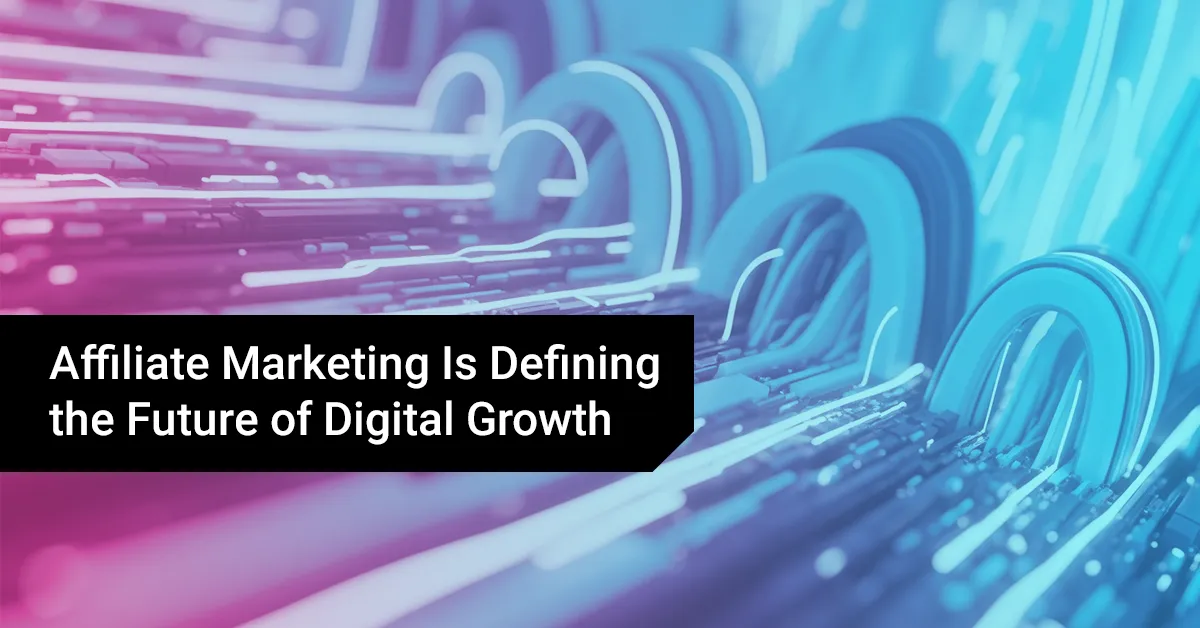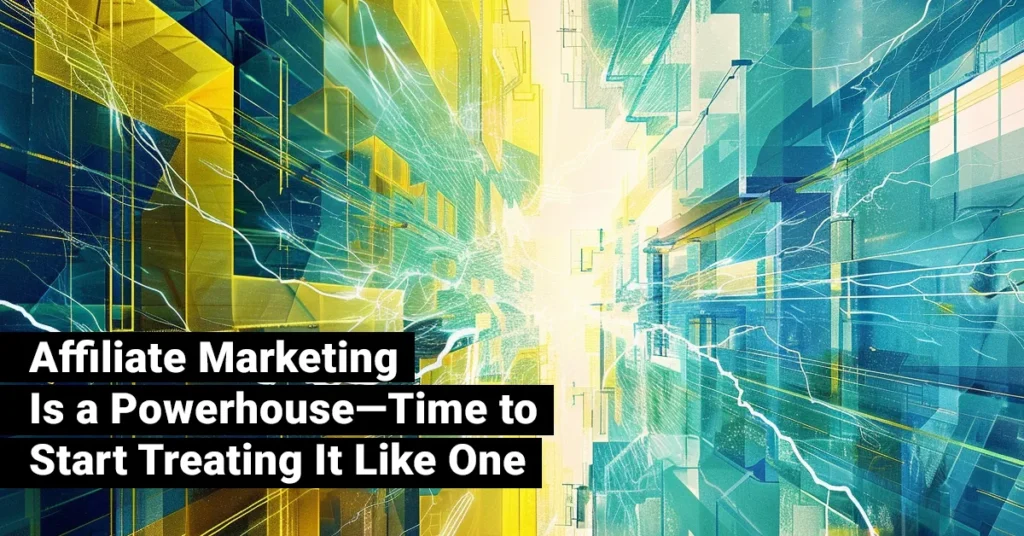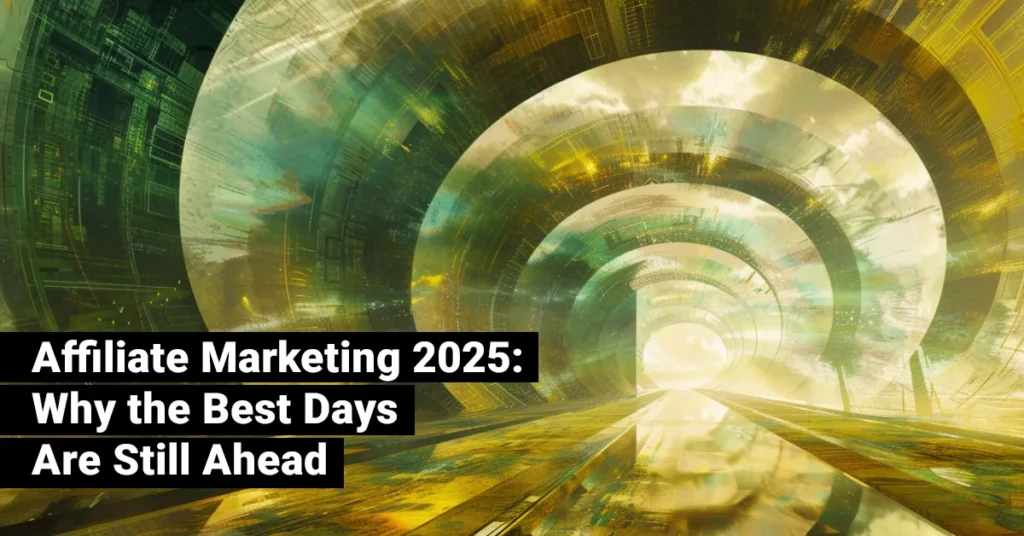A Strategic Industry Response to the PMA Industry Study 2025 – by JEBCommerce
The latest PMA Industry Study confirms what many of us on the frontlines of affiliate marketing have been saying for years: this channel isn’t a “nice to have” anymore, it’s the performance backbone of modern digital commerce.
Based on 2024 data, affiliate marketing in the U.S. reached $13.63B in spend, driving $113B in e-commerce revenue, which accounts for nearly 10% of all U.S. e-commerce sales and up to 20% for brands with active affiliate programs. If this data doesn’t earn the channel a primary seat at the digital strategy table, what will?
But beyond the top-line growth, what matters most is what this study reveals about how consumers are shopping, how brands are adapting, and how affiliate marketing is uniquely positioned to meet both where they are.
Affiliate’s Role in Today’s Consumer Journey
This study validates a shift we’ve been writing about all year: affiliate marketing is no longer the caboose in the conversion train—it’s woven throughout the consumer journey. From early discovery via influencer and content partnerships to decision-stage nudges from cashback, loyalty, and BNPL tools, affiliate is increasingly full-funnel.
The data proves it:
- Bloggers and content creators now drive 42% of content spend, surpassing traditional media. This reflects consumer trust in authentic, community-based voices.
- Buy Now, Pay Later (BNPL) and Card-Linked Offers (CLOs) represent nearly half of tech affiliate spend, a direct response to consumers demanding financial flexibility and ease at checkout.
- Clothing & Accessories now account for 38% of affiliate-driven retail revenue, indicating shoppers aren’t just browsing fashion through social or content—they’re buying it via trackable, commissionable links.
These aren’t surface-level trends, they’re deep signals of where digital commerce is headed.
A Channel Built for Performance—And Now, for Scale
Affiliate has always been performance-based. But what’s emerging is a more sophisticated understanding of performance, one that goes beyond last-click ROI and rewards upper-funnel engagement, personalization, and lifetime customer value.
The numbers speak volumes:
- Retail ROAS sits at $11 for every $1 spent, while Travel leads with $19 ROAS.
- High-performing sub-sectors like Department Stores ($21 ROAS), Office Supplies ($20), and Automotive Parts ($19) reveal niche but powerful affiliate opportunities that brands should not overlook.
- And while some traditional verticals like Beauty & Wellness have softened, new categories are exploding with opportunity, particularly Finance and Telecom, both of which have more than doubled in share since 2021.
What this tells us is clear: when brands diversify their partnerships and invest strategically in emerging affiliate models, they see greater return than in most other paid channels.
The Case for Evolving Your Affiliate Strategy
In past blog posts, we’ve emphasized that affiliate’s best days are still ahead. This report all but confirms it. But for brands and advertisers to fully capitalize on the opportunity, there are a few must-do shifts:
- Budget More Strategically
Affiliate is no longer a plug-and-play channel. Brands need to allocate budget across a portfolio of partners, from creators and media to tech platforms and loyalty ecosystems. - Embrace Innovation in Attribution and Measurement
As cookies sunset and last-click fades, affiliate must champion new tracking models that reflect the true impact of upper-funnel partners. The 54% of publishers who are “only somewhat confident” in tracking are proof that we need continued collaboration on better attribution standards. - Plan for Privacy and Resilience
With over 50% of publishers “very concerned” about Google updates and privacy laws, flexibility and compliance will define tomorrow’s winning programs. This isn’t fear—it’s foresight. Affiliate is built on adaptability. - Lean Into What Consumers Want
Shoppers are voting with their clicks: they want value, trust, flexibility, and relevance. Affiliate delivers on all four, especially when brands invest in partner diversity and consumer-aligned experiences.
Why the Industry Should Be Optimistic
Despite headline-grabbing concerns—algorithm volatility, tracking uncertainty, evolving compliance—publishers are three times more likely to be optimistic than pessimistic about affiliate’s future. That says something.
It says this channel is resilient, innovative, and primed for continued growth.
Final Thought: This Isn’t Just Growth—It’s Maturity
Affiliate marketing is no longer fighting to prove its worth. This year’s PMA study cements its place as one of the most efficient, scalable, and consumer-centric digital marketing channels available.
The real takeaway? Now’s the time for all brands—from retail giants to emerging DTC startups—to stop treating affiliate as an afterthought and start building strategic affiliate ecosystems that drive sustainable, measurable, and meaningful growth.
Let’s build what’s next, together, as an industry.






